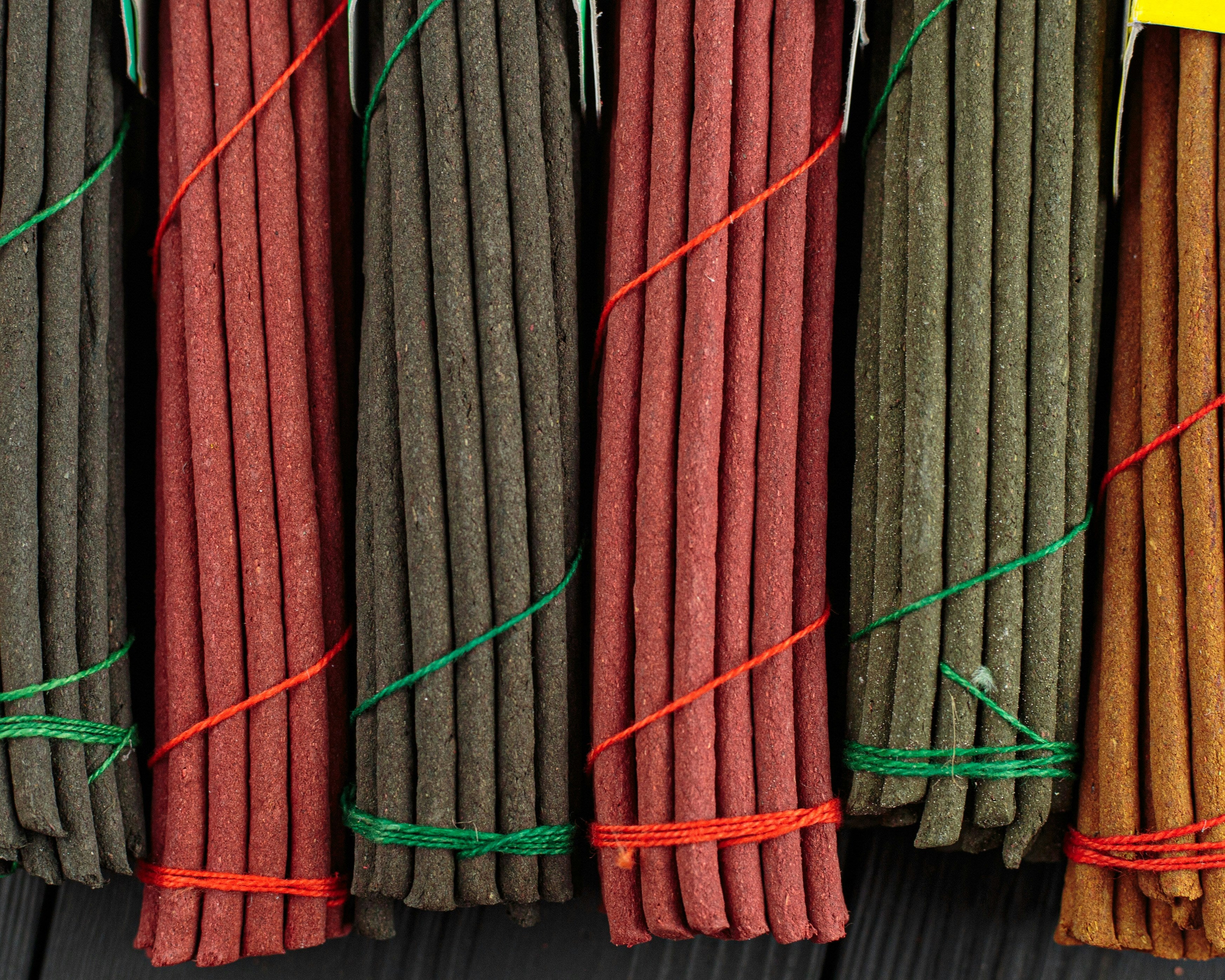
Sanctum Tathaa still observes an “eight-sequence archaic regulation” framed by the Kālacakra Tantra·Incense Chapter and early Nyingma oral manuals, adapted to Mustang’s ecology

An Olfactory Archive on the Snowy Pass: Historical Origins
Since 1498 CE, when the Nyingma master Dechen Gyatso established his hermitage in the Yazegang ravine of Upper Mustang, Nepal, the monastery known as Sanctum Tathaa (मन्दिर तथा) has functioned simultaneously as a retreat center and an incense workshop. Perched in the Kali Gandaki corridor—the ancient throat through which salt, grain and Dharma flowed between Ngari and the Lo kingdom—the community sits at 3,800 m amid a dry-alpine climate that breeds intensely aromatic plants (juniper, rhododendron, snow-layer azalea) found nowhere else on the Tibetan plateau. A stele inside the temple and the local chronicle Lo Royal Genealogy record that in the seventh year after founding, Dechen Gyatso beheld three white-light visions of Padmasambhava in a snow cave and wrote the Founding Vow in his own blood, ending with the line “May the lamp pass to a thousand lamps”—a charter for what would become a living lineage of “lamp-to-lamp” incense offering. Between the 15th and 18th centuries the monastery exchanged tantras and fragrance formulas with monastic centres in Ladakh and Yadong, gradually codifying a Nyingma archetype that uses high-altitude cypress as lord, wild azalea as minister and crystalline rock-salt as fixative. Although the 19th-century Gorkha incursions and the 1934 Bihar–Nepal earthquake repeatedly shattered the buildings, incense production—requiring only local plants, water and hand tools—remained the core craft that allowed the community to maintain ritual continuity and group identity during exile and reconstruction. In 1997 an international sensory-research team entered the valley, helped restore the main hall and documented the oral formulas, moving the Tathaa incense lineage from snowy hermitage into cross-cultural visibility and earning it the epithet “an olfactory archive on the snowy pass.”
From Snow-Twig to Perfumed Cloud: The Manufacturing Process
Sanctum Tathaa still observes an “eight-sequence archaic regulation” framed by the Kālacakra Tantra·Incense Chapter and early Nyingma oral manuals, adapted to Mustang’s ecology:
- Purification (sbyang-ba): on the eighth lunar day monks bless spring water with the Eight Auspicious Verses and rinse all ingredients and implements, symbolically washing away greed and grime and ensuring the “incense body” is clean.
- Prosperity Gathering (rgyas-’gengs): from the ninth to the fifteenth—the traditional “prosperity days”—teams enter the alpine zone to harvest four-year-old high-altitude cypress branches (3,800–4,200 m), auxiliary materials (snow-rhododendron, wild pear blossom, rhodiola leaves) and crystalline rock-salt as fixative; villagers follow a “take three, leave one” rotation to guarantee plant-community regeneration, embodying the Buddhist view that environment and self are non-dual.
- Monastic Artisan (lhab-skor): on return to the monastery, incense-empowered artisans (gsos-dbyangs lhab-skor) weigh the materials according to The Five Treasures·Chapter on Worldly Auspicious Signs and oral Nyingma tradition—high cypress : rhododendron : pear : salt = 6 : 2 : 1 : 0.5 (by weight)—and add 0.2% saffron as a “wake-up spice” to give the aroma layers and “vital energy.”
- Hand Shaping (lag-bzo): using the traditional horn-extrusion method, the mixed powder is kneaded with spring water in a 1 : 0.35 ratio until it no longer sticks to the finger or crumbles; the dough is then loaded into a horn extruder and pressed out in a steady 3 mm-diameter strand, cut to 10.5 cm and immediately hung on bamboo racks—mechanical heat is avoided throughout to protect aromatic hydrocarbons and terpenes.
- Natural Drying (drod-sreg): strands are placed in a loft that is sunny, draft-protected and kept at 18–25 °C; they are shade-dried for 48 hours and turned every twelve hours to ensure uniform moisture loss and to keep the fragrance inward.
- Mantra Blessing (bzlas-brgyud): the dried sticks are moved into the main hall where the monastic community chants the Padmasambhava Obstacle-Clearing Mantra and the Green Tārā Mantra for three days and nights—each stick receives approximately 108 repetitions, forming a “sonic mandala.”
- Lamp Empowerment (mar-me ngag-’gengs): on the final night a copper butter-lamp is lit in front of the hall and each stick is circled seven times through the lamp smoke, symbolising purification and activation of “yang energy” within the aromatic molecules.
- Sacred Dedication (gtor-bzang): the finished sticks are packed in cotton paper pouches, sealed with a hand-written “tathā” vermilion stamp and placed before the Buddha image for one night; only the next morning may they be distributed. Thus the complete transformation “from snow twig to perfumed cloud” is accomplished and every stick acquires the status of a sacred object.
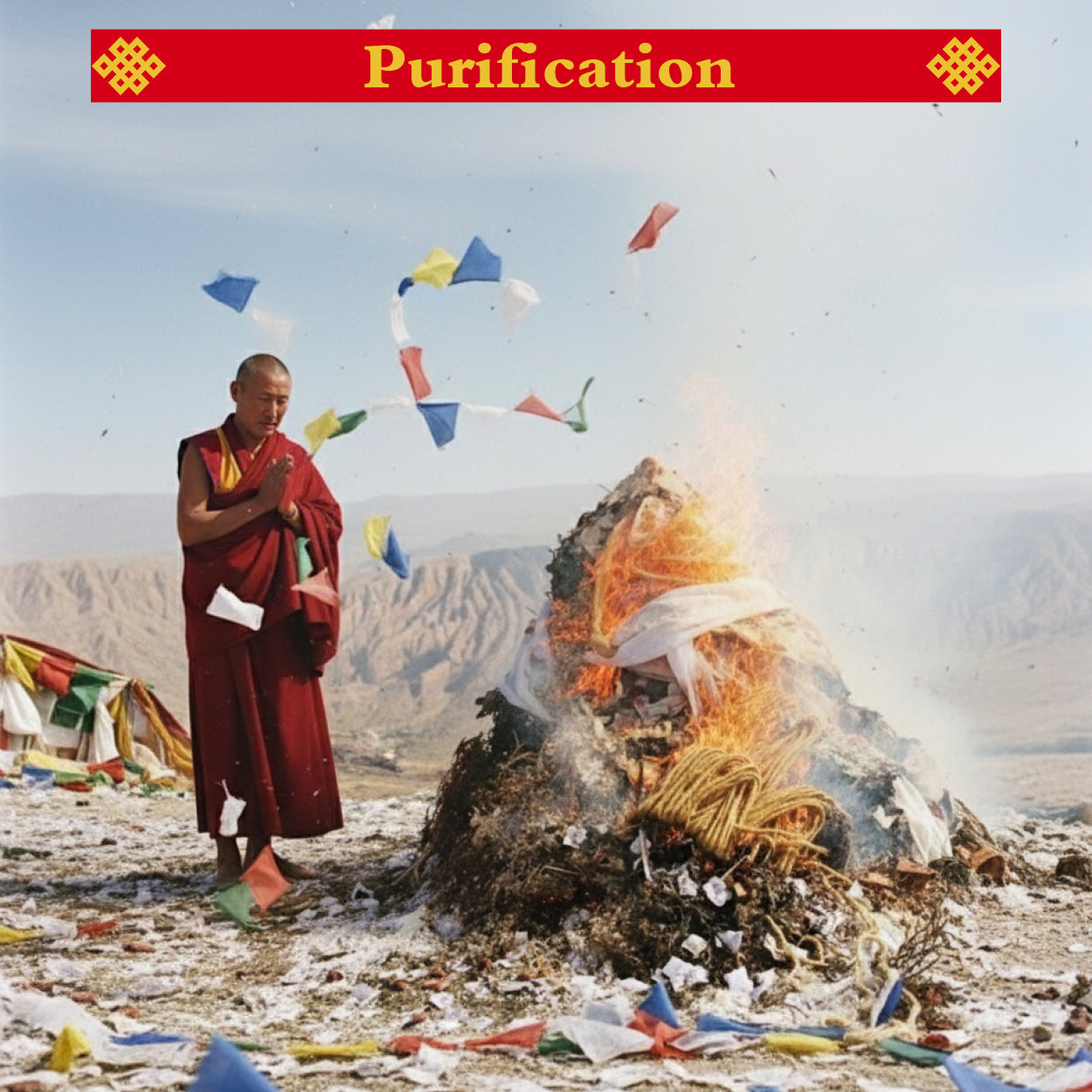
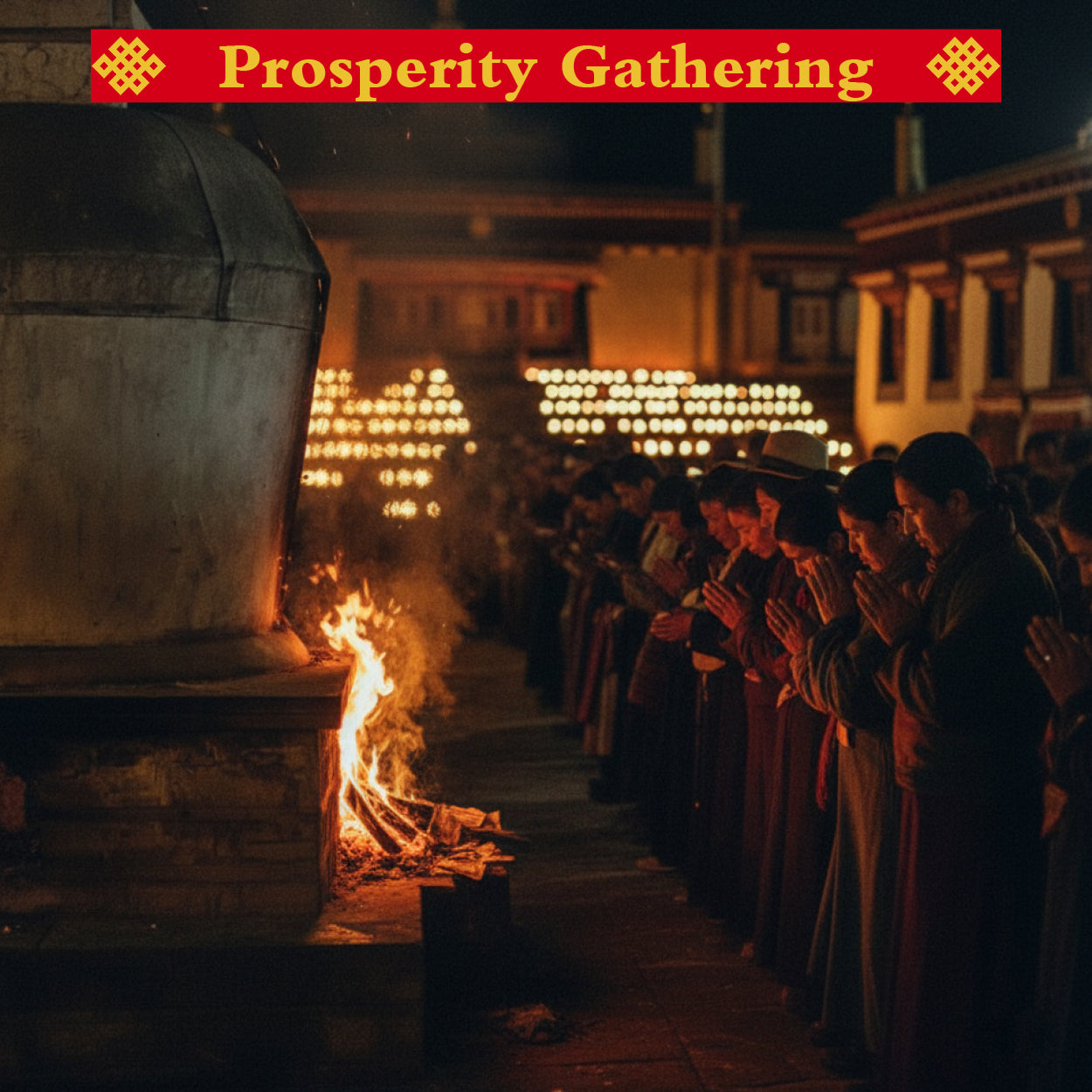
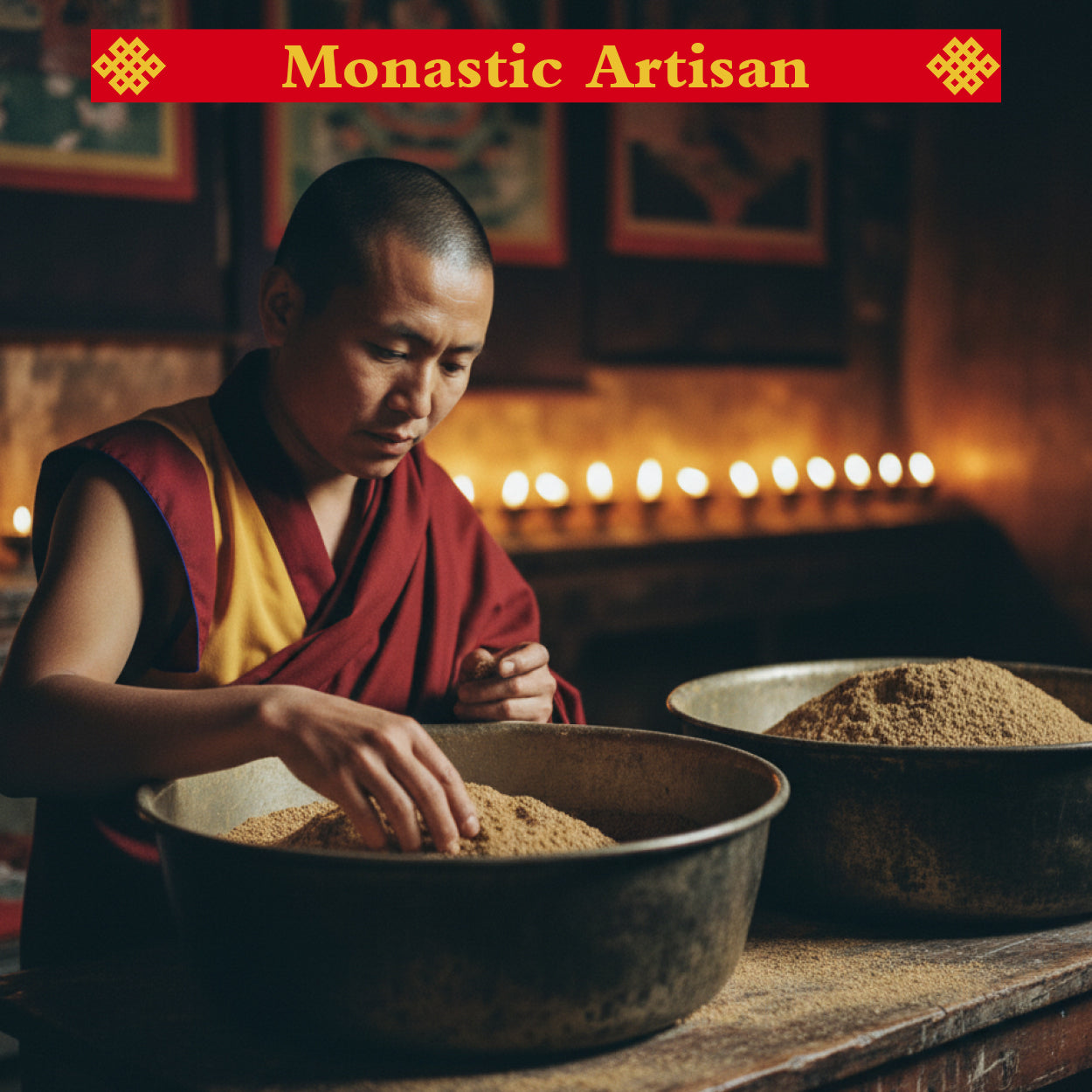
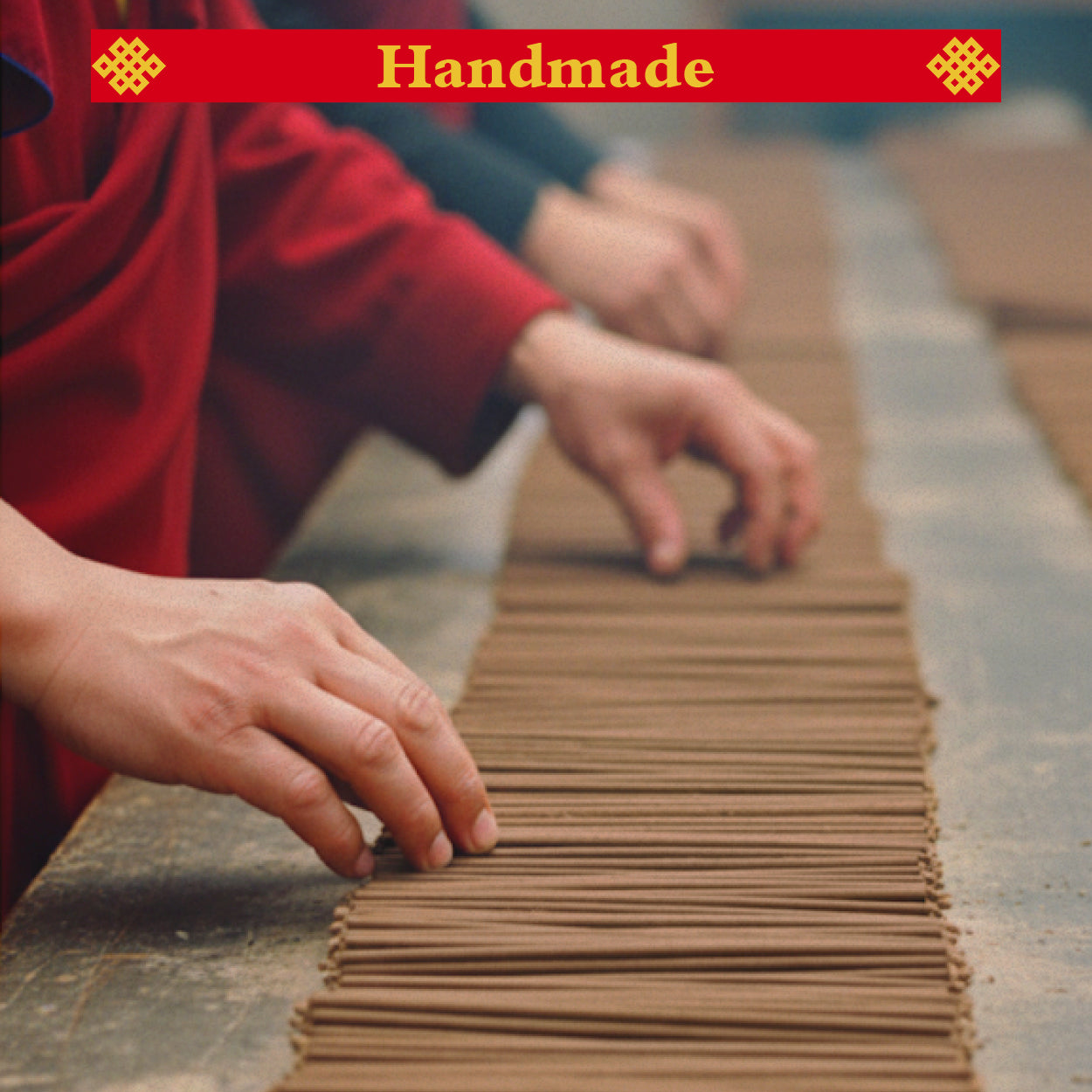
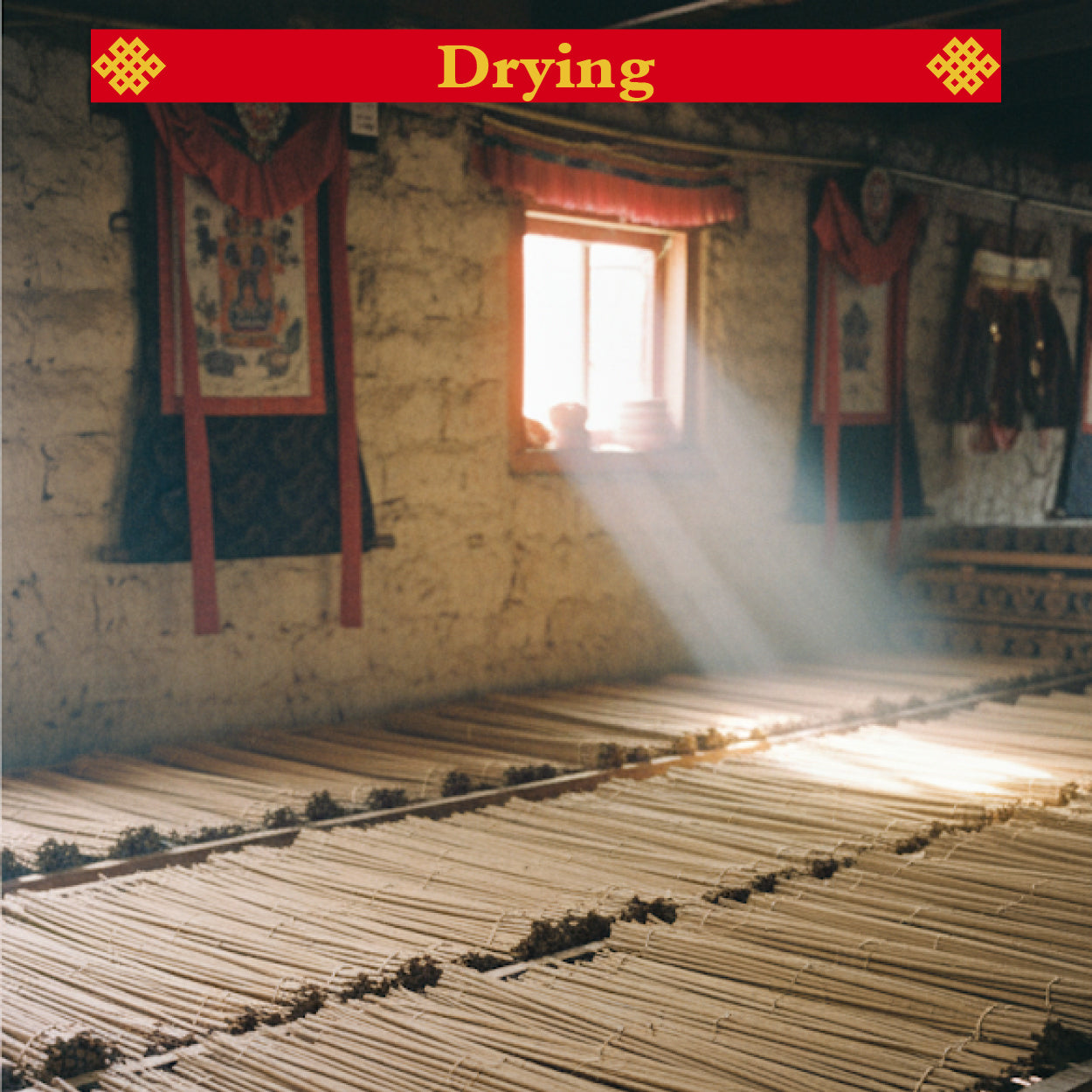
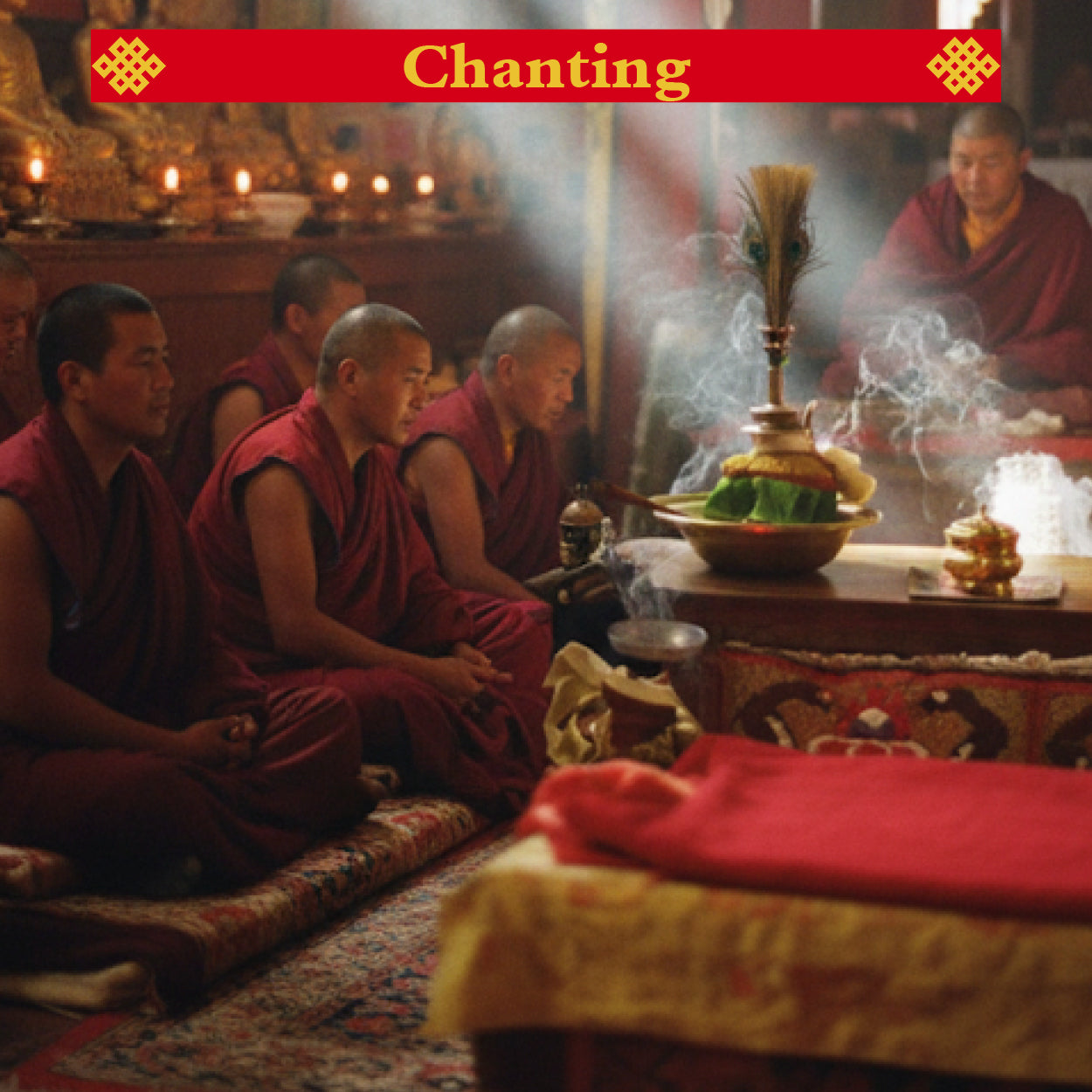
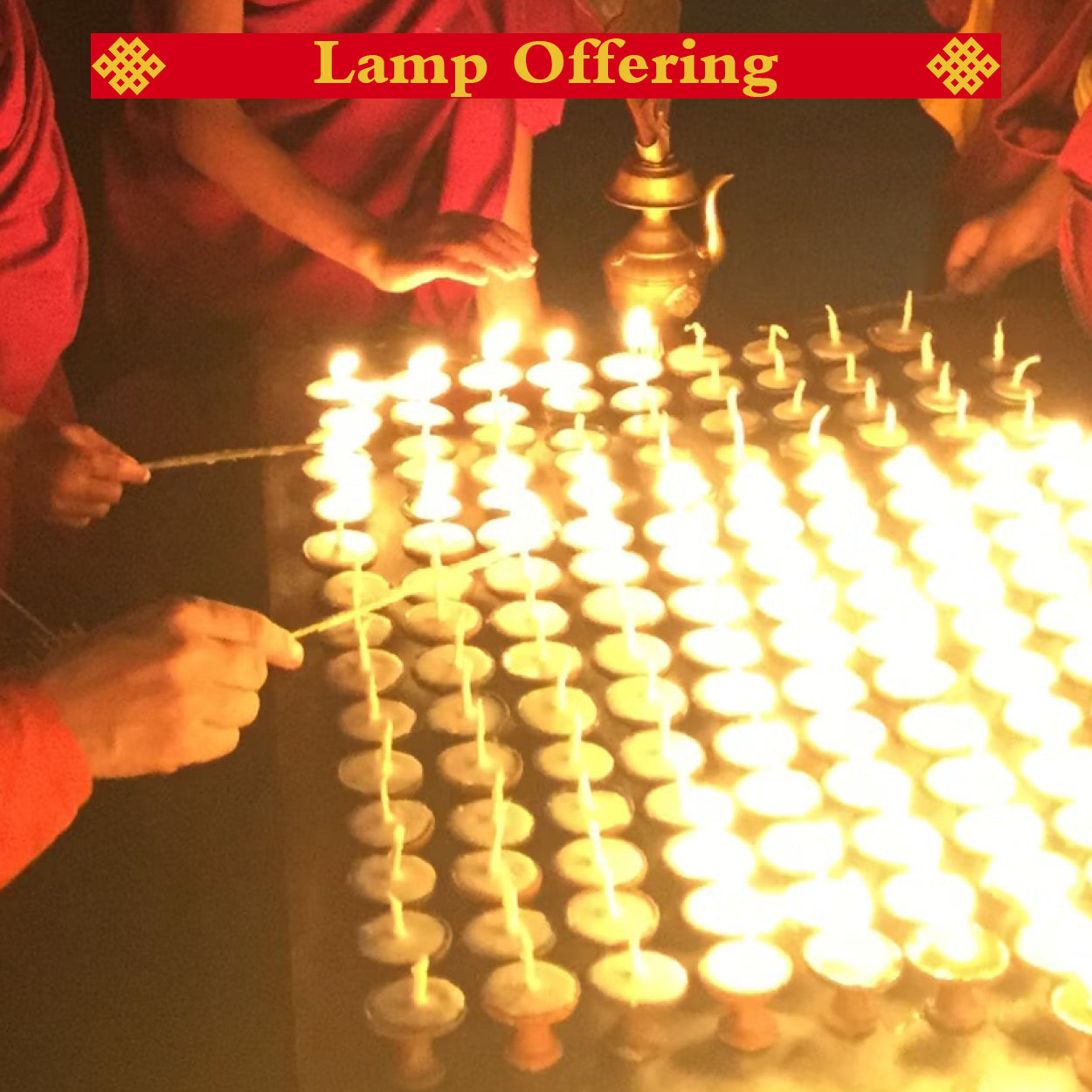
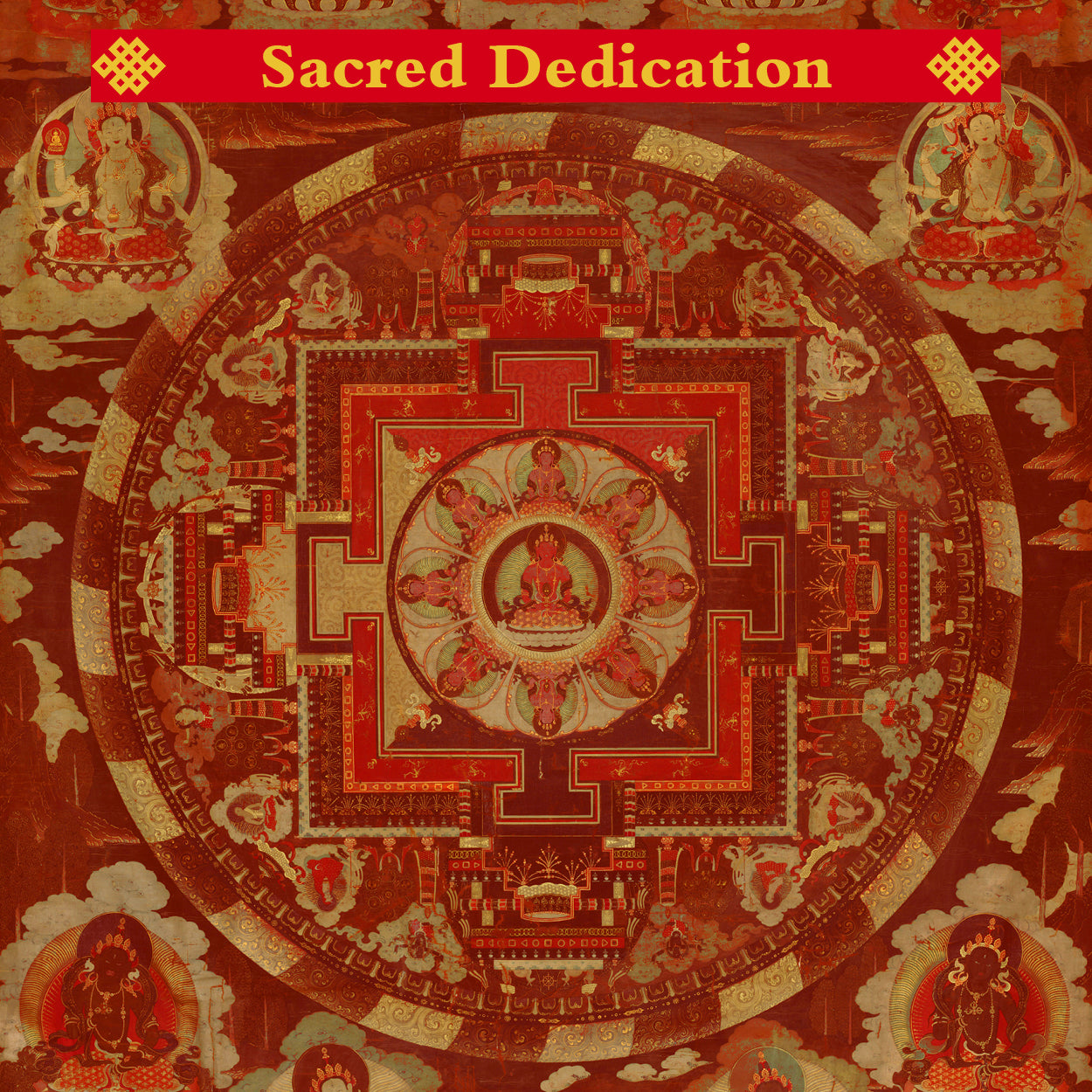
How Aroma Becomes Efficacious: Traditional Medical & Tantric Explanations
Tibetan-medical perspective: high-altitude cypress is rich in α-pinene and limonene, which are antibacterial and expectorant; rhododendron leaves contain flavonoid glycosides that calm and tranquilize; saffron crocin modulates serotonin and relieves anxiety. When burned, aromatic molecules reach the limbic system via the olfactory bulb and within 5–10 minutes lower sympathetic excitation and raise parasympathetic tone, achieving “rapid emotional retuning.”
Tantric perspective: the Nyingma school holds that smell is the gate most directly connected to the ālaya-vijñāna. Aroma is three-tiered: initial flavour (snyom-rlung) regulates breath, middle flavour (thig-le) gathers mind, residual flavour (dgongs-rdzogs) touches emptiness. Having passed through “water-purification, mantra-purification, fire-purification,” the stick embodies the “pacifying” aspect of the four ritual activities; the additional blessing of the Green Tārā Mantra bestows “magnetizing” and “increasing” karmic links, making the incense suitable for aspirations in love, wealth and health.
Psycho-ritual perspective: the fixed ritual framework (north-west orientation, three touches, nine-syllable mantra) creates a “conditioned reflex sacred experience”; through repetition the user establishes the cognition “incense = wish-trigger,” generating self-fulfilling positive cues.
Usage & Modern Adaptation
- Daily Aspiration: before lighting, face north-west (direction of the treasury of wealth), touch the stick gently to forehead, throat and heart, silently recite the chosen mantra three times; place the burner on the left side of the entrance or desk—symbolizing “drawing in and ascending.”
- Travel / Business Trips: at only 10.5 cm long and 15 g net weight, the stick together with the included Himalayan-mineral chip holder fits into a pouch—hotel room or high-speed rail table can become a ritual space in seconds.
- Meditation Aid: each stick burns for approximately 25 minutes, making it an ideal “short-sit” timer; as the smoke rises, visualise “wish ascending,” as it disperses, visualise “wish pervading,” completing a visualised mindfulness cycle.
- Safety & Eco: zero charcoal, zero synthetic fragrance; post-burn ash can be returned directly to flowerpots or soil, achieving a “from mountain, back to mountain” closed loop. Pregnant or asthmatic users should ensure adequate ventilation.
Conclusion
Sanctum Tathaa incense is not a mere olfactory commodity but a “snowy time-capsule” that seals five centuries of valley dawn-mist, salt-vein minerals, monastic cadence and high-altitude plant respiration. When you strike a match, the snow-wind brushes the juniper again and the bell echoes in the distance; all you do is press play—so the blessing of the snow-land may flow once more through urban nightscapes.